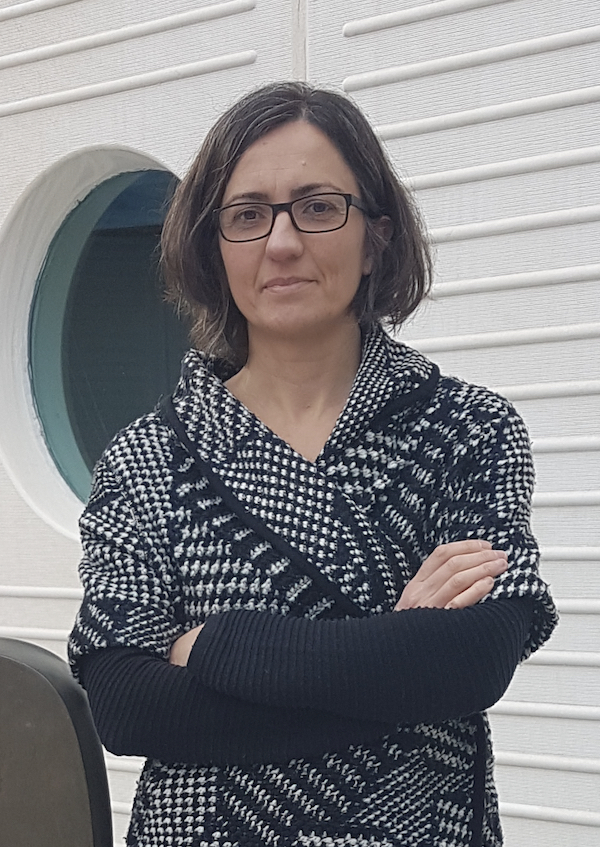Sandra Fonseca
Group Leader
Research summary
As autotrophic organisms, plants are genetically programmed to seek for light. The diverse and highly efficient strategies that plants developed to adapt to environmental light conditions shaped earth landscape. We aim to understand how plants respond to beneficial and damaging light stimulus by controlling in a coordinated way protein homeostasis, chromatin dynamics and transcriptional networks.
Publications
Lee B-D, Yim Y, Cañibano, E., Kim S-H, García-León M, Rubio V, Fonseca S, Paek N-C. CONSTITUTIVELY PHOTOMORPHOGENIC1 promotes seed germination by destabilizing RGA-LIKE2 in Arabidopsis. Plant Physiology 2022
Cañibano E, Bourbousse C, Garcia-Leon M, Wolf L, Garcia-Baudino C, Barneche F, Rubio V, Fonseca S DET1-mediated COP1 regulation avoids HY5 activity over second-site targets to tune plant photomorphogenesis. Molecular Plant 2021, 14(6): 963-982
Fonseca S, Rubio V. Arabidopsis CRL4 complexes: surveying chromatin states and gene expression. Frontiers in Plant Sci 2019; 10: 1095
Ortigosa A, Fonseca S, Franco Zorrilla JM, Fernandez-Calvo P, Zander M, Lewsey MG, García-Casado G, Ecker JR, Solano R The JA‐pathway MYC transcription factors regulate photomorphogenic responses by targeting HY5 gene expression. Plant J, 2019 102: 138-152.
Nassrallah A, Rougee M, Bourbousse C, Drevensek S, Fonseca S, Iniesto E, Ait-Mohamed O, Deton-Cabanillas A, Zabulon G, Ahmed I, Stroebel D, Masson V, Lombard B, Eeckhout D, Gevaert K, Loew D, Genovesio A, Breyton C, de Jaeger G, Bowler C, RubioV, Barneche F DET1-mediated degradation of a SAGA-like deubiquitination module controls H2Bub homeostasis. eLife 2018; 7:e37892
As sessile photoautotrophic organisms, plants evolved sophisticated strategies to perceive light environmental signals and to transduce them into molecular signalling networks. Though light is essential for plant growth and development, often plants have to cope with damaging or excessive light conditions, which generate stress and limits growth. We aim to understand the molecular mechanisms that allow plants to integrate beneficial and damaging effects of light and respond to them with striking plasticity. We are especially interested in the events that lead to coordinated transcriptional changes during light adaptation as changes in chromatin states, transcription factor stability and protein homeostasis. To understand the molecular mechanisms that coordinate these processes we are using genetic, genomic, biochemical and proteomic tools.
MOLECULAR MECHANISMS REGULATING LIGHT-SIGNALLING PATHWAYS
We have been especially interested in the function of DE-ETIOLATED1 (DET1) protein. DET1 was identified in light-related screenings, is related to DNA damage responses and binds chromatin. We recently found that DET1 is necessary for COP1 (CONSTITUTIVE PHOTOMORPHOGENIC 1) destabilization. By promoting COP1 turnover DET1 is essential for its activity, keeping a tight control of HY5 transcription factor levels. Otherwise, HY5 overaccumulation would compromise plant growth and viability (Cañibano et al., 2021).

LIGHT RELATION WITH ENVIRONMENTAL STRESSES
High light intensity stress on the top of other environmental stresses as high temperature or drought can greatly diminished plant growth and compromise biomass production. We are investigating these relations envisioning future beneficial applications in a climate change context.
Laboratory Members
Name |
Position |
Contact |
| Sandra Fonseca | Group leader | |
| Esther Cañibano | Predoctoral scientist, co-supervised with Vicente Rubio | |
| Martín Albacete | Predoctoral scientist, co-supervised with Vicente Rubio |






